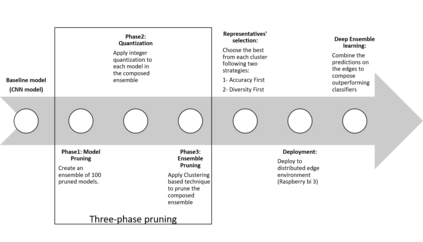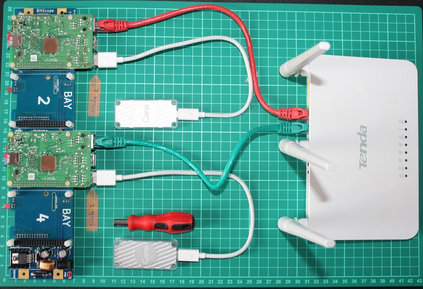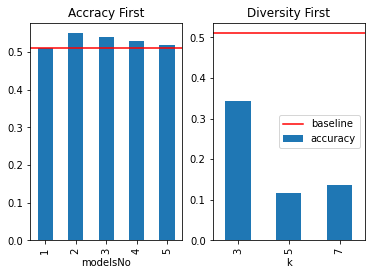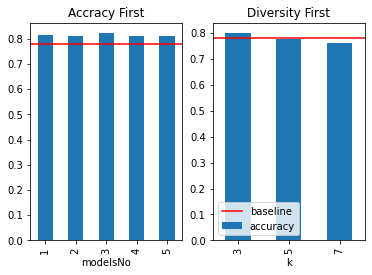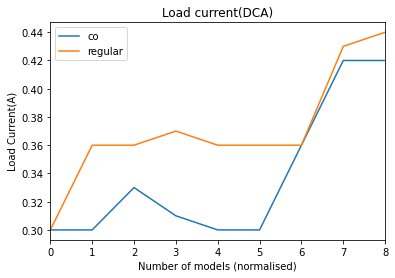Most recently, with the proliferation of IoT devices, computational nodes in manufacturing systems IIoT(Industrial-Internet-of-things) and the lunch of 5G networks, there will be millions of connected devices generating a massive amount of data. In such an environment, the controlling systems need to be intelligent enough to deal with a vast amount of data to detect defects in a real-time process. Driven by such a need, artificial intelligence models such as deep learning have to be deployed into IIoT systems. However, learning and using deep learning models are computationally expensive, so an IoT device with limited computational power could not run such models. To tackle this issue, edge intelligence had emerged as a new paradigm towards running Artificial Intelligence models on edge devices. Although a considerable amount of studies have been proposed in this area, the research is still in the early stages. In this paper, we propose a novel edge-based multi-phase pruning pipelines to ensemble learning on IIoT devices. In the first phase, we generate a diverse ensemble of pruned models, then we apply integer quantisation, next we prune the generated ensemble using a clustering-based technique. Finally, we choose the best representative from each generated cluster to be deployed to a distributed IoT environment. On CIFAR-100 and CIFAR-10, our proposed approach was able to outperform the predictability levels of a baseline model (up to 7%), more importantly, the generated learners have small sizes (up to 90% reduction in the model size) that minimise the required computational capabilities to make an inference on the resource-constraint devices.
翻译:最近,随着IOT设备的扩散、IIOT(工业-互联网网络)和5G网络午餐的制造系统IIOT(工业-互联网网络)的计算节点以及5G网络的午餐,将出现数百万个连接装置,产生大量数据。在这样的环境下,控制系统需要足够智能,处理大量数据,以发现实时进程中的缺陷。由于这种需要,深层学习等人工智能模型必须部署到IIOT系统中。然而,学习和使用深度学习模型的深度模型模型是昂贵的,因此,一个计算能力有限的IOT设备不能运行这种模型。要解决这个问题,边缘情报已经作为在边缘设备上运行人工智能模型的新范例出现。虽然已经提出了大量的研究,但研究仍处于初始阶段。在本文中,我们提议了一个新的基于边缘的多阶段分流管道,以在基于IIOT的装置上进行混合学习。在第一阶段,我们从模型模型模型模型的多样化的模型模型模型,无法运行这种模型,然后我们运用每个配置的精细度的模型生成了一个新的模型,然后在最后的计算中,我们用一个配置的模型来生成一个具有代表性的序列的模型,一个结构的模型, 将我们用一个最精细的模型生成的模型生成了一个结构到一个结构的模型到一个结构的模型到一个结构的模型到一个比。


